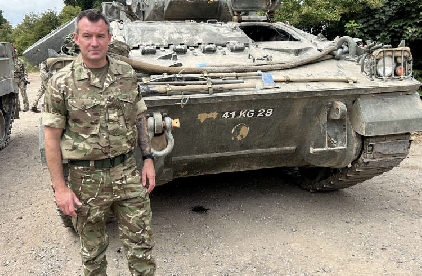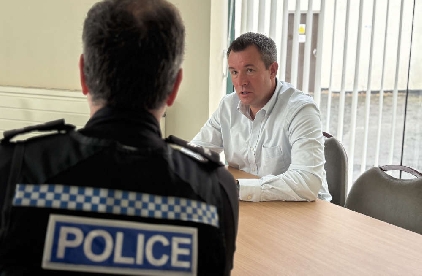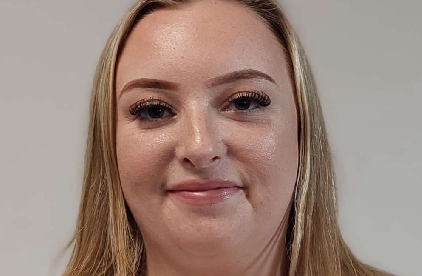
An automatic smoke detector which asks people using cigarettes to step away from a women and children’s department has been installed at a hospital in the county.
The detector has been installed outside the department at the Royal Shrewsbury Hospital following a complaint from a new mum.
The detector features a voice warning asking smokers to move away from the building if it picks up a heat source.
The Shrewsbury and Telford Hospitals NHS Trust Board, heard about work to move smokers away from the department after a new mother could smell smoke through the window of her bay after giving birth.
The prevalence of smoking at delivery in Shropshire and Telford & Wrekin has been higher than the national average at 12.3 per cent and 18.3 per cent, respectively.
The government has an 11 per cent target.
Ruth Smith, lead for patient experience, said: “Maternity services are leading the way in smoking cessation, working with the local authority and Maternity Voices to meet the needs of the population to tackle public health issues with a focus upon smoking in pregnancy.
“All midwives and women’s support assistants receive mandatory smoking cessation training.
“All women are now Carbon Monoxide (CO) tested at each antenatal appointment throughout their pregnancy regardless of their smoking status.”
She added: “Smoking within any hospital building has been banned since 2007 and Public Health England is promoting a smoke free NHS with smoking being stopped anywhere on NHS premises.
“Whilst healthcare staff should not be judgemental, the benefits of a non-smoking environment should be taken into account.
“Outside the women and children’s centre entrance there is a section to the left where there is a space between the entrance structure and side room one and two within Ward 21, the design of which has enabled windows to be placed in the side rooms.
“This external area is under cover and provides a level of shelter from the elements.
“This area is where the patient experienced exposure to cigarette smoke as people were frequently congregating within the area outside the side room in which she was receiving treatment.
“Upon receipt of the feedback a small group of stakeholders reviewed the area to explore options which could be taken to improve the environment.
“Action has since been taken to reduce postnatal mothers and babies exposure to smoke through increasing signage outside the women and children’s centre entrance; erecting fencing to restrict access to the sheltered area between the entrance and side rooms; and erecting a portable detector which delivers a warning to people smoking within the area if a heat source is detected.
“The patient who contacted the trust to share her experience was made aware of the steps being taken to improve the environment based upon her feedback.
“Upon completion of the work she was invited back to see the changes which had been introduced.
“She expressed that she was pleased at the trust’s response which gave her assurance that someone is listening.”
She added: “Everyone has a role to play in helping to improve patient experience.”


 Powys councillors vote to consult on proposed tourism tax
Powys councillors vote to consult on proposed tourism tax
 MP urges Prime Minister to keep Armed Forces Covenant Pledge
MP urges Prime Minister to keep Armed Forces Covenant Pledge
 Roadworks planned in Bridgnorth town centre
Roadworks planned in Bridgnorth town centre
 MP calls for fairer funding for rural public services
MP calls for fairer funding for rural public services
 Fury in market towns over £20m ‘snub’ to the rest of Herefordshire
Fury in market towns over £20m ‘snub’ to the rest of Herefordshire
 Shropshire woman charged with supporting Hamas
Shropshire woman charged with supporting Hamas
 Tenbury Applefest 2025 cancelled due to severe weather forecast
Tenbury Applefest 2025 cancelled due to severe weather forecast
 Digital IDs “won’t deter illegal immigration” says councillor
Digital IDs “won’t deter illegal immigration” says councillor
